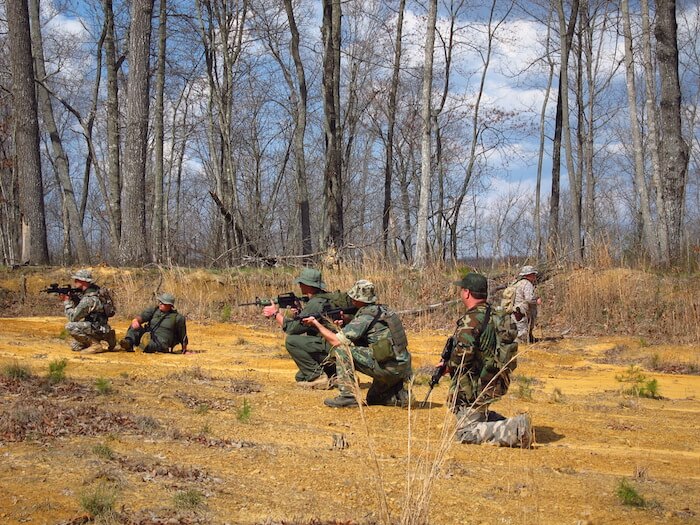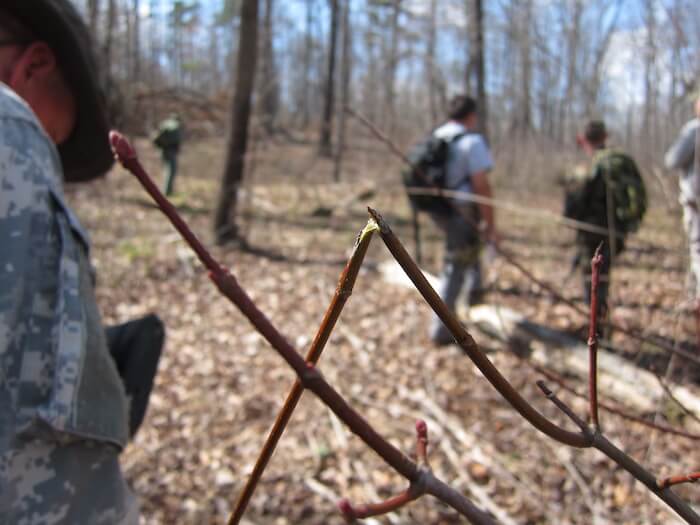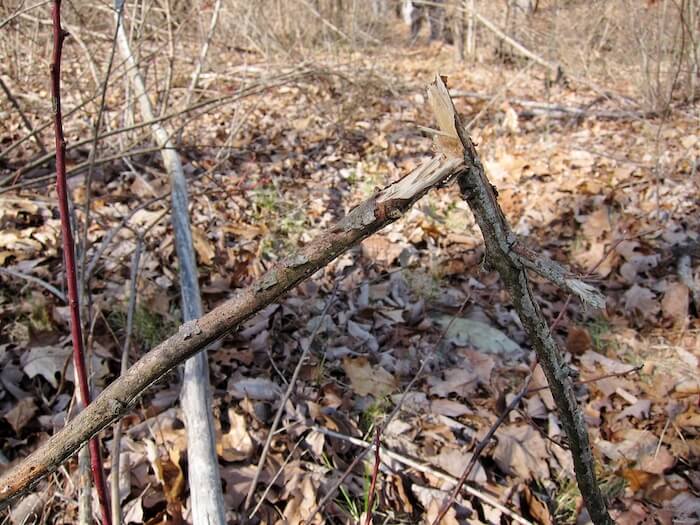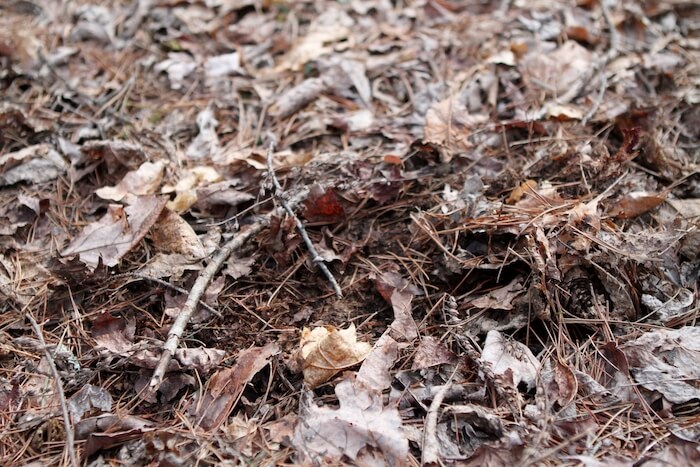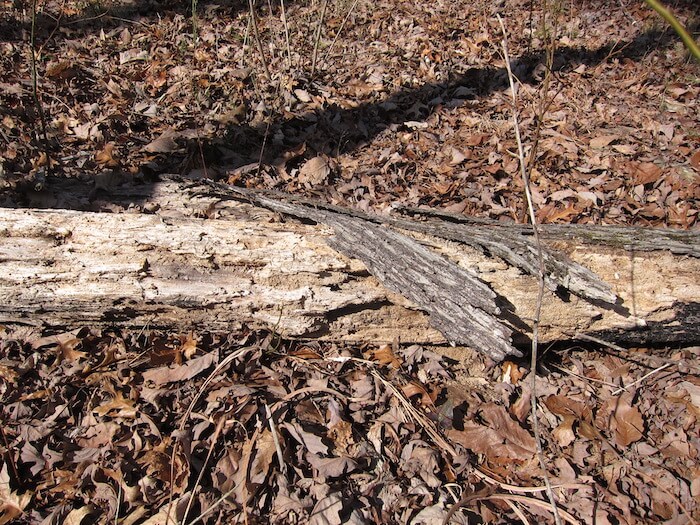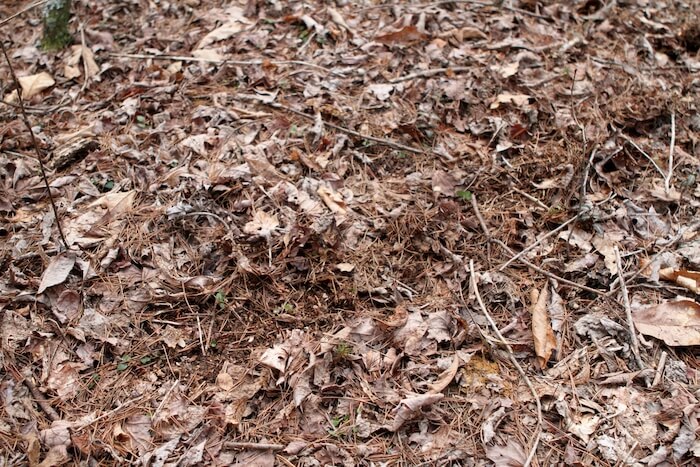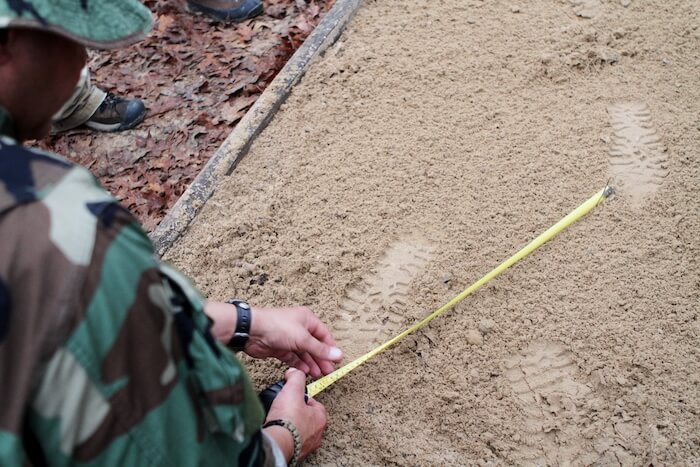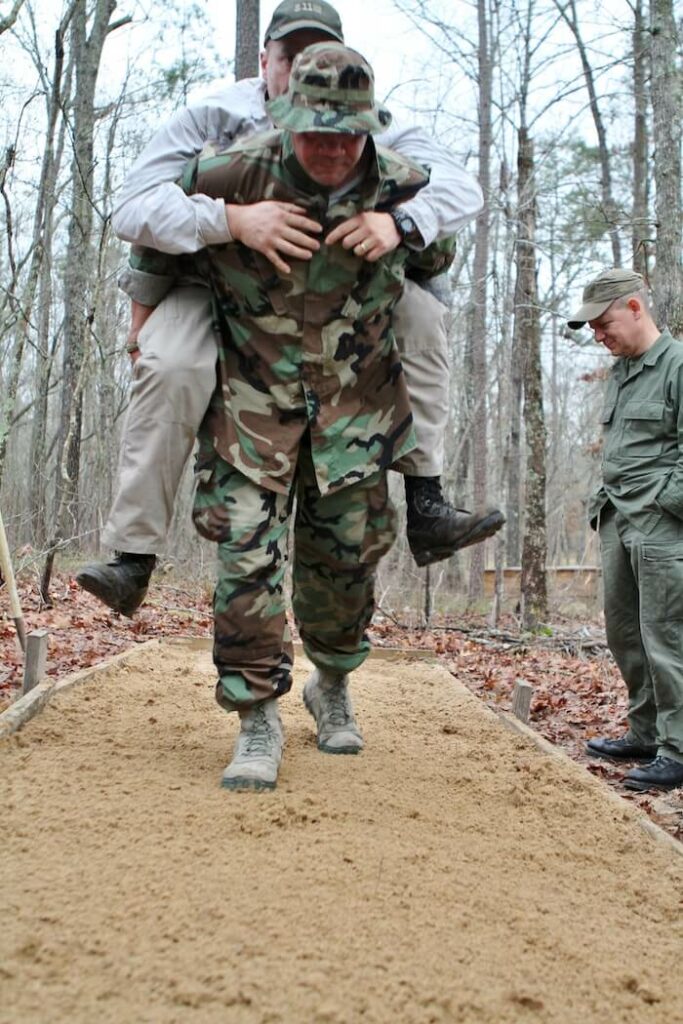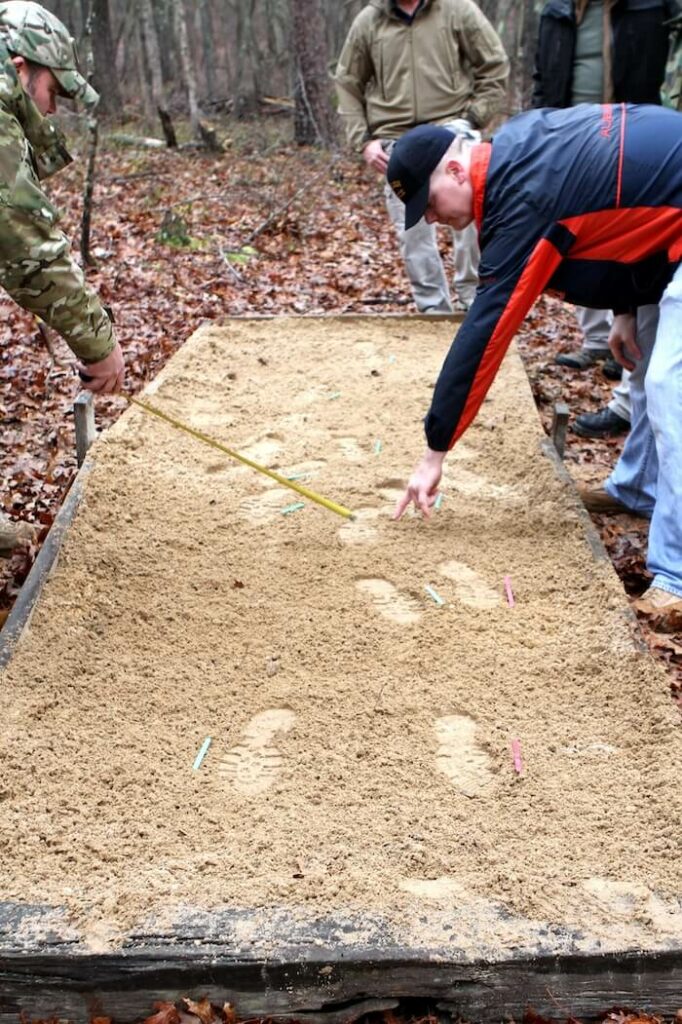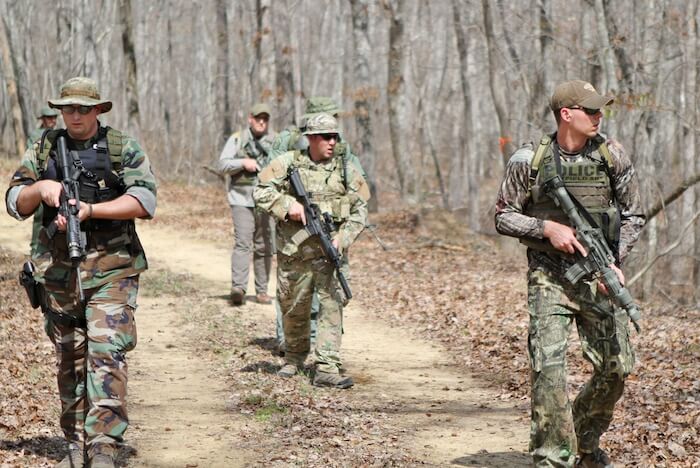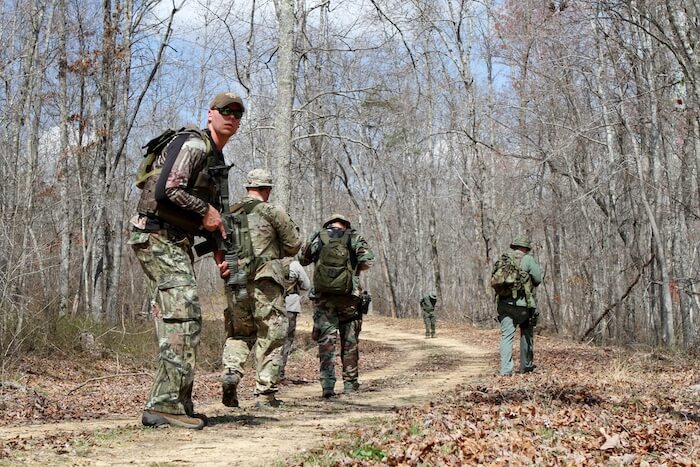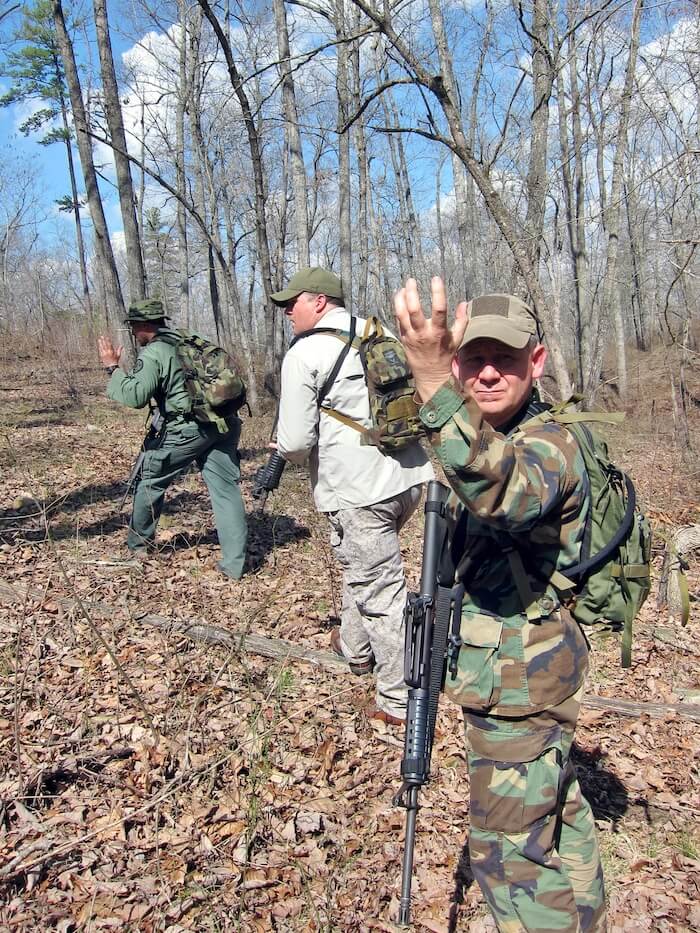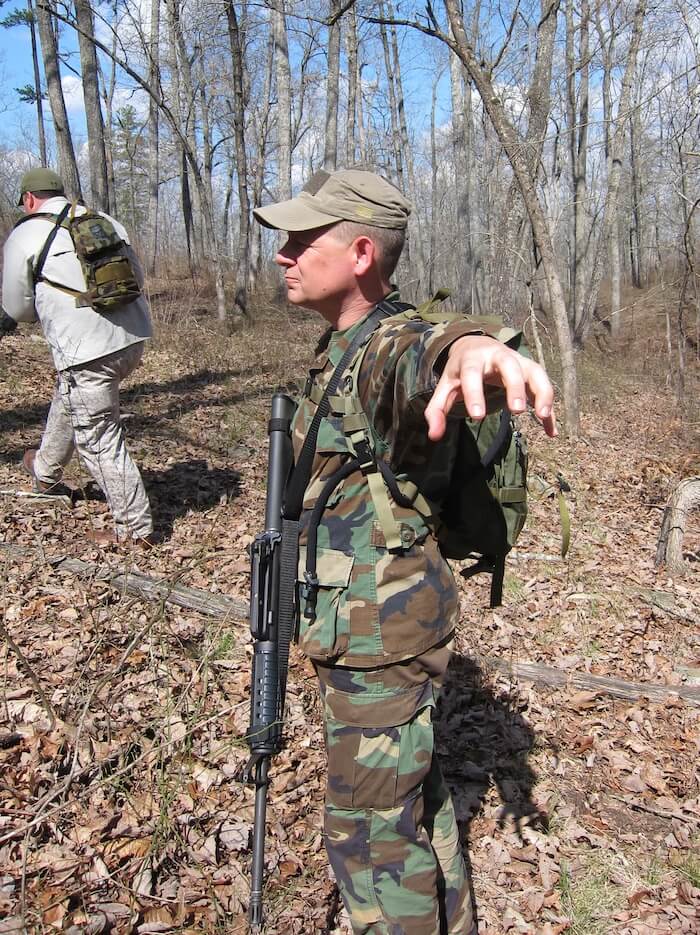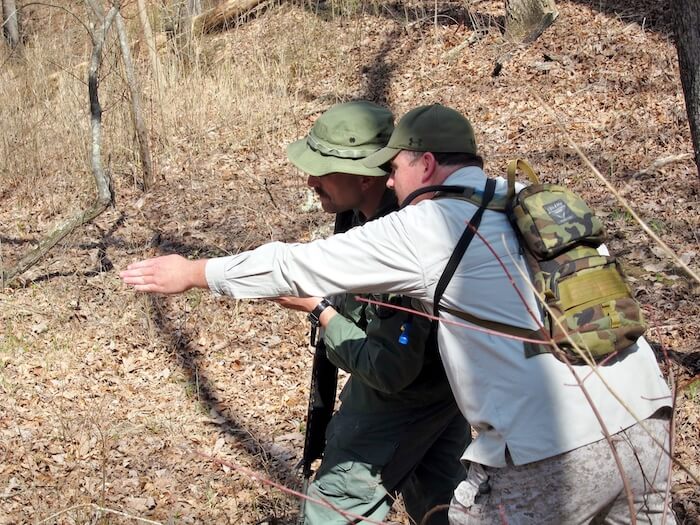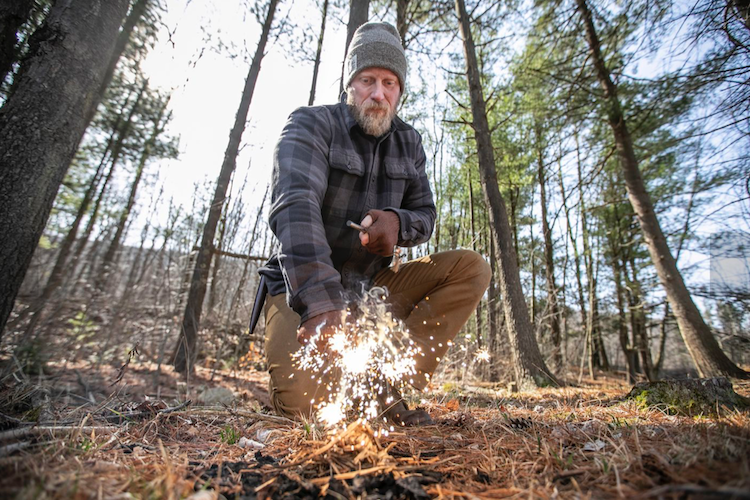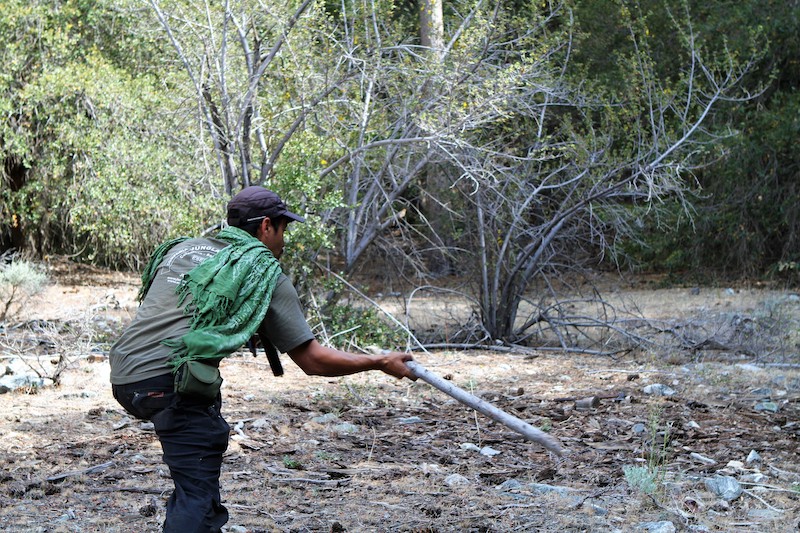Never look at the ground the same again!
The 2003 Hollywood movie The Hunted, starring Tommy Lee Jones and Benicio del Toro, gave us a brief look into tracking as the hero tracks his assailant in the wilderness of the Pacific Northwest. Yes, with a little hype, some crazy acrobatics, epic knife fights, and the fastest forging of a knife blade I have ever seen. The point is that it gave us a glimpse into the art of man tracking.
Man Tracking
How is man tracking different from tracking animals? Animals have set characteristics and do not conceal their spoors (tracks), but a man who doesn’t want to be found is cunning and capable of concealing spoors. Man tracking is often referred to as combat tracking or tactical tracking. It is the art of being able to follow and hunt down a person by following the signs left behind.
Much of this tracking style was adopted from the Selous Scouts, a Rhodesian Army Special Forces regiment in Africa, which operated from 1973 until 1980. It was organized as a mixed-race unit consisting of soldiers of both African and European descent, whose primary mission was operating deep in the insurgent-controlled territory.
How to Train
Tracking requires intense concentration and an eye for detail, but you must know what to look for when reading spoors. Training usually starts in the sandpit where a person can see what the perfect spoor looks like for the first time. This type of training creates optimal conditions where a person’s shoe pattern can be seen in pristine conditions. All of the spoors are fresh at this time and share the same characteristics of sharp edges and clear sole patterns but differ depending on the actual speed. A person moving moderately will have obvious, even weight distribution and patterning. There will be a deeper heel imprint at a faster, brisk speed. The spoor will have a noticeable toe imprint at running speed with debris kicked back and not as much heel imprint. The stride will also increase.
When recording a track, use a yardstick or tape measure to figure out the stride, straddle, and pattern size (not shoe size). The stride is the length of the pace (right and left foot) either from toe to toe or heel to heel, but it should be consistent. The straddle is the width of the pace. It is measured from the outside right foot to the outside of the left foot. The spoor size is measured from the top of the pattern to the bottom. Never estimate shoe size. Spoors that have been identified as multiple people are then marked with colored sticks giving an idea of what is going on.
An exercise that contributes the best results is where two people team up, each taking turns laying tracks for about 10 paces. The track layer marks his first step at the heel with a stick, then proceeds to lay spoors (while the partner watches), and marks his last step with another stick. The partner then has to identify each step from the first stick marking to the last. As easy as it sounds, it’s not.
Awareness
The key points to think of when trying to find signs of activity and tracks are:
Patterning– The obvious footprint in the mud near streams, water holes, and along sandy rivers where the pattern of a shoe/boot has made an impression, confirming it is a human. These areas near sand and moist ground are known as tracking traps. Rifle butts used as crutches or canes up steep slopes and a walking stick all leave a unique pattern.
Disturbance– Watch for rocks that have been overturned, leaving the dark side up, revealing the impression on the ground where they came. Look for scuffed tree bark of standing or fallen logs and leaves on plants that have been broken or knocked off. Disturbed grass blades will reveal the direction of travel. After sunrise, the dew will be disturbed if the person has passed through, and a faint darkened area will reveal a trail. Watch for broken spider webs and cobwebs.
Ariel flagging– Looking up at branches that have been broken or bent, revealing a lighter wood color. Vegetation turned over or broken will show the light underside contrasting with the surroundings.
Transfer– Water on rocks or the ground could show where a person came out of the water. Of course, there are the old favorites of urine and blood on vegetation, trees, and the trail.
Tracking Teams and Formation
In a tracking team, a team leader is responsible for briefing the team on the operation and is responsible for the control of the team and all backup forces until the time of contact. He relays information to the follow-up team and headquarters. If the team is working as a four-man team, he is also the tail gunner/rear guard. Until contact with the enemy is made, the team leader is boss!
This is a five-man tracking team walking in a narrow Y formation. The rearguard always scans for danger or an assailant who may have been hiding as the team passed.
The tracker: He is responsible for reading the spoors and interpreting them for the team leader. Trackers are too valuable to risk in a firefight and should not engage unless there is a serious manpower shortage. When examining spoors, the tracker will keep his head slightly up and look 15 to 20 yards ahead, enabling him to see the spoor better, determine the direction of movement, and keep alert for likely ambush areas.
The flankers: These two men, who are also trained trackers, are responsible for the forward and flank security of the tracker. As the tracker becomes fatigued, they rotate duties with him so that all the trackers remain fresh and alert. The flanker’s function is important; he will probably see and engage the enemy first and must be alert and ready for instant action.
Rearguard: He pulls security at the back, occasionally facing away from the team, watching for anything missed or a possible ambush.
Follow-up: These men are under the control of the team leader until contact is made or the enemy is pointed out. They are the reinforcement muscle.
The standard tracking formation is a Y shape where the flankers form the Y’s tips, the tracker at the junction, the team leader directly behind him, and the rearguard is at the back. The team leader remains behind the tracker. Flankers remain forward of the tracker to the side as much as possible. The distance and spacing are up to the team leader.
When operating, use hand signals at all times. Teams can devise signals, but it is important to use the same ones consistently. If team members must confer, take cover and talk low. Speak with a low murmur or softly. Rotate tracker and flanker often. Tracking requires concentration, and the pressure is tremendous, so rest teams as often as possible. Once on the spoor, they may be forced to travel for many miles—tired people make mistakes. Teamwork saves lives and gets results; if possible, never separate a team once formed.
Lost Tracks
If you decide to learn the art of tracking, then one thing is guaranteed, you will lose the spoor at some point. When this happens, go back to the last positive spoor and mark it. Then look up to about 25 to 30 meters ahead and sweep visually from center to left out about to 45 degrees and then sweep back to the center. Repeat the process to the right, each time coming back to your feet and the last confirmed spoor. Look carefully and slowly, and most times, you will pick it up again. If not, brief the team on which method will be used to pick it up again. There are a few methods used to relocate a spoor. The most common are the cross-grain, the box search, and the 360-degree sweep.
CROSS GRAIN METHOD- To use the cross-grain method, the tracker moves laterally from the spoor, either left or right (distance determined by team leader), and then doubles back toward his original line of march. Each time he turns, the tracker should advance before doubling back.
360-DEGREE SWEEP METHOD– In the 360-degree method, the tracker makes ever-increasing circles from his last confirmed spoor back to his point of origin.
BOX METHOD- Sometimes used is the box method in which each half of the area is boxed off and examined on the two sides of the last known spoor. When spoors are lost, be patient and keep looking!
Enemy Found
Once contact is made, the team can take cover or move to a skirmish. The team forms a sweep line on contact, and then all move forward together. What happens here is up to the team leader.
Tracking Tips
-When moving from sign to sign, always be sure of your last confirmed sign before moving on to the next.
– Learn to use your sense of smell and sight, and hearing.
– Most of the time, you may be tracking disturbance of some kind and not perfect tracks.
– Be persistent: don’t lose the will to win when you lose the spoor/trail. Try to find it again.
None of this knowledge will make someone a tracker by reading it: Only practice, practice, and more practice, under expert supervision, will do that


